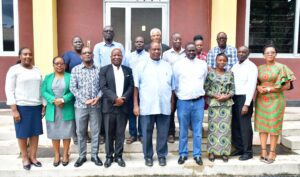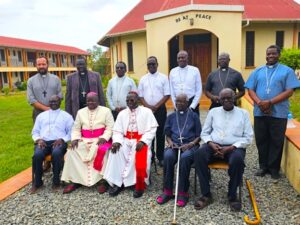KENYA: ACWECA through the lens of a founding member
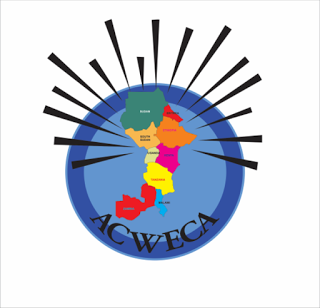
This year marks 43 years since the Association of Consecrated Women in Eastern and Central Africa (ACWECA) was founded. It was in September 1974 that the first Conference of the AMECEA Sisters, as they were then called took place.
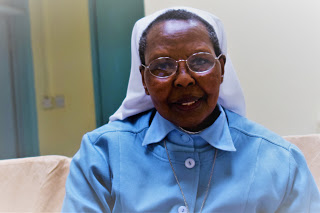
the Convent of the Assumption Sisters of Nairobi
The Conference ran from 8th -13th September, with 24 participants from Kenya, Malawi, Tanzania, Uganda and Zambia. But the idea of an assembly for English speaking consecrated women in Eastern Africa did not just happen overnight. For some years, whenever African Superiors General joined their counterparts in Rome during the International Union of Superiors General (U.I.S.G.) meetings, some kind of an assembly was recommended for the region.
In interview with Sr. Marie Theresa Gacambi, one of the founding members, it was the challenge of suddenly being propelled into the leadership of her Congregation of the Assumption Sisters of Nairobi that moved her to encourage fellow religious women in the region to start the Association. She explained that the Missionaries of Africa Sisters who had been involved in the administration of her congregation requested to withdraw and that meant they had to prepare for their first general chapter.
The Chapter eventually took place in 1973. She was in the interim administration of her congregation that helped to prepare the first General Chapter in which she was elected the Mother General. “I felt that collaborating with missionary congregations could make others learn from their experience and so I felt a strong need for networking,” she said.
And when the bishops of the Association of Member Episcopal Conferences in Eastern Africa (AMECEA) region had their plenary assembly in 1973, they invited some representatives of Consecrated women in the region to attend. The sisters attended the plenary but they couldn’t make any contribution because they went in as observers.
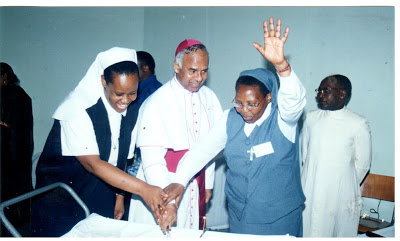
President during the 2005 Plenary Assembly in Malawi (ACWECA Archive)
This experience further ignited their desire to have their own meetings where they could discuss issues that are relevant to their consecrated life and their role in evangelisation. It was at this AMECEA Plenary that the sisters agreed to meet separate.
The first Conference with the theme “Role of Religious Women in Evangelisation” was successfully held at Limuru in Kenya. And over the years the study conference took place either annually or after every other year, though it now takes place after every three years.
At that first meeting, Sr. Edel Bahati addressed the delegates on behalf of Sr. Marie Theresa Gacambi, the then Chairperson of the Association of Sisterhoods of Kenya (AOSK) who also doubled as the chairperson of the AMECEA Sisters. In her address, Sr. Bahati thanked all who had made the conference possible and in her words said, “It was a historic moment –a first regional meeting of its kind in the history of African Women Religious.”
Over the years the Association has held over a dozen assemblies with various themes that are often in line with the Association’s vision, empowering consecrated women for deeper evangelisation.”
And according to Sr. Gacambi, the idea of having sisters come together was to strengthen themselves for the mission of evangelisation. “If we African sisters are not going to strengthen ourselves, then we better forget any evangelisation” she recalled having encouraged the sisters. She said at that time the Association had no funding but they still agreed to meet in 1975. The group encouraged each other to come with whatever they had. She recalled that members from Uganda came with bananas, while others came with whatever they could bring and the meeting went on successfully.
She revealed that she had to use diplomacy to meet Sisters who were not allowed to attend the meetings to explain how the Association missed them and how it would be of benefit if they attended. “My argument was that if the sisters understood their life and ministry they would be more productive,” she recalled.
The year 1975 was the year of evangelisation and Sr. Gacambi recalled it was at that meeting that the sisters expressed the need to take on Formation as a priority. And it happened that she was invited to attend the UISG meeting in Rome. It was at this time that the office of the Sacred Congregation for Religious and Secular Institutes in consultation with the African Superiors General present at the UISG Assembly that they planned the 1976 Conference. They chose the theme of “Religious Formation” and Rome went on to fully sponsor the Conference.
The Conference had a delegation from the Sacred Congregation for Religious and Secular Institutes and Sacred Congregation for the Evangelisation of Peoples. The delegates also received the Pope’s letter of encouragement which read in part: “The Holy Father greatly appreciates your desire for deep authentic spirituality as well as your concern for universal Church. His Holiness invokes upon all assembled and all beloved religious in Eastern Africa a renewed generosity, joyful consecrated love of Jesus Christ and his brethren and willingly imparts his apostolic blessing.”
By 1976 the Association was becoming stronger and most importantly too, it was also during this Conference that the Association was renamed Sisters of East Africa Study Conference, (SEASC) from its original name “AMECEA Sisters.”
Sister Gacambi explained that they chose to call it a Study Conference simply because they (the Association) at that time lacked legal structures. Today the Association has statutes, operational guidelines and policies to guide its activities.
“As a Study Conference we were trying to make people to accept us in order to enable us to organise ourselves,” she said, adding that their aim was to strengthen the leadership of the Member Conferences and the Institutes. So whereas a study conference could comfortably operate without raising any suspicions (remember it was a time of change), an Association needs legal structures to be able to operate freely.
It was in 2002 that delegates to the 12th Plenary Assembly changed the name to Association of Consecrated Women in Eastern and Central Africa (ACWECA). This, according to members would take care of the increasing membership demands from other countries that had been brought on board. Today as a regional body, ACWECA is fully registered under the Society’s Act of the Republic of Kenya, from where the Secretariat of the Association has operated since 1988. It has a membership of nine countries of English speaking countries of Eastern and Central Africa.
A three-time Chairperson of the Association (1974, 1976 and 2005), Sr. Gacambi says she feels encouraged because each country in the region has a strong Member Conference and that the congregations too are open to learn from each other. “As a founding member, what more could one wish for?” She asked.
She added that, the sisters are able to identify what the people are asking of them and there is a trend towards self-reliance not only in finances but also in human resource as the mission of ACWECA says there is to promote the Spirit of Collaboration and Sharing of Spiritual, human and economic resources among Member Conferences to enhance Religious formation and strengthen leadership capacity for deeper Evangelization.
“We know that we are able to give personnel to which ever mission we are asked,” she said with confidence, adding that she would not be surprised if ACWECA Region in the nearest future would not have personnel serving in the administration of the UISG, the global body for Religious Women in the Catholic Church, in Rome.
∽End∽
By Sr. Grace Candiru, MSMMC – ACWECA Communication Officer

